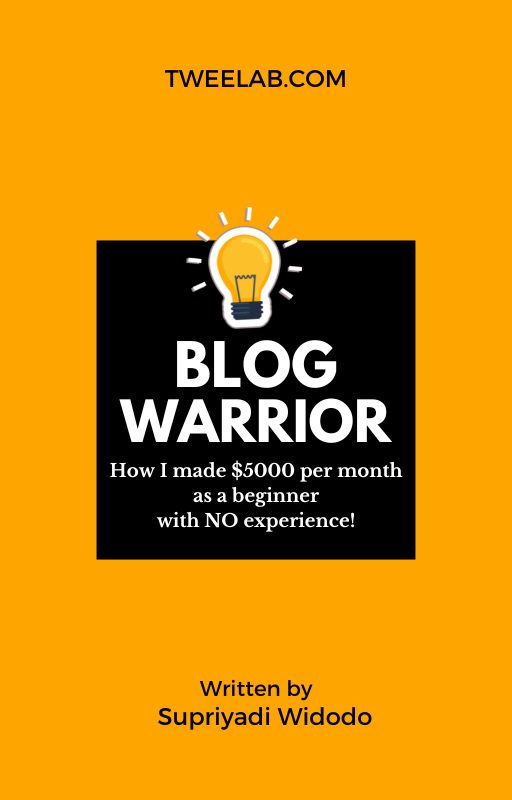Hey there, fellow bloggers! Choosing the right blog theme can be a daunting task. With so many options available, it’s easy to get overwhelmed and make a hasty decision that you might later regret.
Table of Contents
As a seasoned blogger with years of experience under my belt, I’m here to share some tips on how to choose the perfect blog theme for your website.
First things first: before selecting a theme, think about what kind of content you plan on publishing. Are you going to focus mainly on written articles or do you want to showcase your photography skills too? Do you need any specific features like an online shop or email newsletter integration?
Once you have a clear idea of what your website needs are, it’s time to start browsing themes. Remember that the blog design should reflect your brand identity and style – don’t just go for something because it looks pretty!
In this article, we’ll explore some important factors to consider when choosing a blog theme.
Identifying Your Blog’s Purpose And Goals

Welcome to the world of blogging! Choosing the perfect theme for your blog can be a daunting task, but it doesn’t have to be. The key is to start by identifying your blog’s purpose and goals.
The first step in choosing the right blog theme is defining your niche. Your blog should focus on a specific topic or area of interest that sets you apart from other bloggers. This will help you attract and engage readers who are interested in what you have to say.
Once you’ve defined your niche, it’s important to create a branding strategy that reflects your unique perspective and personality. Your branding strategy should include everything from the colors and fonts used on your site to the tone and voice of your writing. These elements work together to create an overall impression of your brand, so it’s important to choose them carefully.
When selecting a blog theme, make sure that it aligns with your branding strategy and supports the message you want to convey.
Remember, choosing a blog theme is just one part of creating a successful blog. By taking the time to define your niche and develop a strong branding strategy, you’ll set yourself up for success in the long run.
So go ahead – get started today!
Understanding Your Target Audience

As a blog theme expert, it’s crucial to understand your target audience before choosing the right theme for your blog. Audience analysis and persona development are important factors that can help you in this process.
To conduct an effective audience analysis, start by identifying who your ideal reader is. This will help you create a persona or fictional character that represents your typical reader. Once you have a clear understanding of their demographics, interests, pain points, and goals, you can tailor your content and design choices accordingly.
When it comes to evoking an emotional response from your audience through design elements, there are three sub-lists worth considering:
- Color psychology: Different colors evoke different emotions and can influence how your readers feel when they visit your site.
- Typography: Font choice and size can impact readability and accessibility while also conveying tone and personality.
- Imagery: Images and graphics communicate ideas quickly and powerfully. Choosing the right visuals can make a big difference in how memorable and impactful your blog is.
By taking the time to understand your target audience through audience analysis and persona development, you’ll be better equipped to choose the right blog theme that resonates with them emotionally. Remember to use color psychology, typography, imagery, or any other design element thoughtfully to enhance their experience on your site.
With these tips in mind, you’re ready to create a more engaging blog that connects with its intended readership!
Exploring Different Types Of Blog Themes

As we discussed in the previous section, understanding your target audience is crucial when it comes to creating a successful blog. But once you have that down pat, it’s time to move on to another important aspect of blogging: choosing the right theme.
Your blog’s design can make or break its success, which is why it’s important to carefully consider all your options before making a decision.
One of the first things you’ll need to decide is whether you want a minimalist or bold theme. Minimalist themes are clean and simple, with plenty of white space and minimal distractions. Bold themes, on the other hand, are more eye-catching and attention-grabbing.
When deciding between these two types of blog themes, it’s important to keep in mind what kind of content you’re producing and who your target audience is. If your content is text-heavy and informative, then a minimalist theme might be best as it will allow readers to focus solely on your words without any distractions. However, if you’re producing visual content such as photos or videos, then a bolder theme might better showcase those elements.
Another factor to consider when choosing a blog theme is price point. There are both free and premium options available for most platforms. While free themes may seem like an attractive option at first glance, they often come with limited customization options and can look unprofessional compared to their paid counterparts. On the other hand, premium themes offer more flexibility and unique features but come at a cost.
Ultimately, there isn’t one right answer when it comes to choosing the perfect blog theme – it all depends on your personal preferences and goals for your website. By considering factors such as style and price point though, you’ll be well on your way towards finding a theme that perfectly complements your content!
Evaluating Design And Layout Options

When it comes to choosing the right blog theme, there are a variety of design and layout options to consider. Evaluating these options is crucial in order to ensure that your blog not only looks great, but also functions well for users.
One key element to evaluate when selecting a blog theme is the color palette. Your chosen colors should be visually appealing and complement your brand or content. Additionally, you want to make sure that the contrast between text and background is legible for readers.
Another important aspect to assess is the navigation menu. The menu should be easy to use and prominently displayed on the page. Users should have no trouble finding what they’re looking for and navigating through your site’s pages.
Incorporating these elements into your evaluation process will help you select a blog theme that meets both aesthetic and functional requirements.
Remember: choose a color palette that complements your content and prioritize an intuitive navigation menu for visitors. With these considerations in mind, you’ll be on track towards creating an engaging blog with high user satisfaction levels!
Considering Functionality And Features

I’m a blog theme expert and when it comes to considering functionality and features, SEO, customization options and user experience design are key.
SEO helps you get the word out about your blog and maximize your audience.
Customization options make it easy for you to make the blog look and feel the way you want.
UX design is essential for making sure your readers have a great experience when they visit your blog.
All three of these are important considerations when choosing the right blog theme.
With the right theme, you can maximize your visibility, create the perfect look, and make sure your readers are happy.
Search Engine Optimization
When it comes to choosing the right blog theme, functionality and features are undoubtedly important factors. However, one aspect that should not be overlooked is search engine optimization (SEO).
The success of your blog largely depends on how easily it can be found by potential readers through search engines like Google. To optimize your blog for search engine ranking, you need to conduct keyword research. This involves identifying the phrases or words that people commonly use when searching for content related to your niche.
Once you have a list of relevant keywords, incorporate them strategically into your blog’s content as well as meta tags such as title tags and descriptions. Doing so will improve the chances of your blog appearing at the top of search results pages.
Another crucial element in optimizing your blog’s SEO is ensuring its mobile responsiveness since most internet users browse using their smartphones nowadays. Your chosen theme should offer responsive design which allows easy navigation on different screen sizes without compromising visual appeal and readability.
Remember that a fast-loading website also contributes significantly to better SEO rankings; thus, choose a lightweight theme with clean code optimized for speed, especially if you plan to publish multimedia-rich content. Keep these tips in mind, and make sure your chosen theme elevates both form and function while optimizing your SEO performance!
Customization Options
Now that we have covered the importance of SEO in choosing a blog theme, let’s move on to another critical factor – customization options. Personalization vs. simplicity is always a balancing act when it comes to choosing a theme that suits your needs best.
A good blog theme should offer enough flexibility and features for you to customize it according to your preferences while also keeping things simple and easy-to-use.
One aspect where this balance is particularly crucial is color scheme selection since it can significantly impact the visual appeal of your blog. While some themes come with pre-designed color schemes, others allow you to choose custom colors or even create your own palette from scratch. Consider what kind of branding or personality you want your blog to convey and select colors accordingly.
Apart from color schemes, other customization options may include font styles, layout variations, header designs, widget placements, social media integration, and more. Depending on your blogging goals and niche market, make sure you pick a theme that offers relevant customization options without overwhelming you with too many choices.
User Experience Design
Now that we’ve covered the importance of SEO and customization options in choosing a blog theme, let’s move on to another critical factor – user experience design.
The overall look and feel of your blog can significantly impact how users interact with it. Therefore, you need to consider functionality and features that enhance the user’s browsing experience.
One crucial aspect of user experience design is color psychology. Colors have an emotional impact on people, so selecting the right color scheme for your blog is essential. You should choose colors that align with your brand identity while also considering their psychological effects.
For instance, blue conveys trustworthiness, green represents growth and health, while red evokes passion or excitement.
Another critical element of user experience design is typography choices. Your font style selection should be easy-to-read yet unique enough to stand out from other blogs in your niche market. Consider using different font sizes for headings versus body text or incorporating custom fonts if necessary.
Moreover, ensure that there is adequate spacing between lines and paragraphs to improve readability. By paying attention to these details, you’ll make sure readers stay engaged with your content as they navigate through your pages.
In conclusion, when considering functionality and features for your blog theme, don’t overlook user experience design elements such as color psychology and typography choices. These factors can contribute significantly to how visitors perceive your site visually and interact with it effectively. Keep in mind that creating a seamless browsing experience will keep users coming back for more!
Ensuring Responsiveness And Compatibility

Did you know that 52% of all website traffic worldwide comes from mobile devices? This means that it is crucial to ensure your blog theme is optimized for mobile use.
Mobile optimization refers to the design and functionality of a website on smaller screens, such as smartphones or tablets. A responsive blog theme will adjust its layout according to the screen size it’s being viewed on.
Browser compatibility is another important factor when choosing a blog theme. Compatibility ensures that your website can be accessed by users regardless of which browser they are using. Different browsers may interpret code differently, so checking compatibility with popular browsers like Google Chrome, Mozilla Firefox, and Safari is essential.
When looking for a blog theme, make sure to check if it has been optimized for mobile use and tested for browser compatibility. You don’t want potential readers leaving your site because they can’t view it properly on their device or preferred browser.
By ensuring responsiveness and compatibility in your blog theme, you’ll provide a better user experience and increase engagement with your content.
Customizing Your Chosen Theme To Fit Your Brand

Now that you’ve chosen the perfect blog theme for your brand, it’s time to make some customizations.
One of the most important aspects of customization is selecting a color scheme that aligns with your brand identity. This will help ensure that your readers immediately recognize and associate your content with your unique style.
Start by considering the colors associated with your logo or branding materials. Use these as a starting point when choosing colors for various elements of your blog, such as background color, font color, and button color.
It’s also helpful to think about how different colors evoke emotions in people – for example, blue is often associated with trust and calmness, while red can signify excitement or urgency.
In addition to selecting a cohesive color scheme, choosing the right fonts can greatly impact the overall look and feel of your blog. Stick to one or two fonts throughout your site to maintain consistency.
Sans-serif fonts are typically easier to read on screens, while serif fonts can give off a more traditional vibe. Ultimately, choose fonts that complement each other well and reflect the tone of your content.
With these tips in mind, you’ll be able to customize your chosen theme so that it perfectly reflects your unique brand identity!
Frequently Asked Questions
How Can I Make Sure My Chosen Blog Theme Is Search Engine Optimized?
To ensure that your chosen blog theme is search engine optimized, there are a few things to keep in mind.
First and foremost, make sure the theme has been designed with SEO optimization in mind. This means clean and concise code, proper use of heading tags, and fast loading times.
Additionally, look for themes that allow for easy customization of meta descriptions and titles.
It’s also important to choose a theme that is mobile-friendly as Google now prioritizes mobile-first indexing.
By taking these factors into consideration when selecting your blog theme, you’ll be well on your way to achieving better rankings and increased traffic from search engines.
Are There Any Themes That Are Specifically Designed For Mobile Devices?
It’s a popular theory that having mobile-friendly designs and responsive layouts is the way to go when it comes to blog themes.
And, as an expert in this field, I can confirm that this theory holds true.
In fact, many modern blog themes are specifically designed with mobile devices in mind.
These themes ensure that your content looks great on any screen size while maintaining fast loading times and easy navigation for readers who access your site from their phones or tablets.
So if you want to provide the best possible user experience for all of your visitors, look no further than mobile-friendly blog themes with responsive layouts.
Can I Switch To A Different Theme After I’ve Already Started Blogging With One?
Yes, you can switch to a different theme after starting your blog with one. However, it’s important to keep in mind that some customization options may not transfer over seamlessly and could cause compatibility issues with your new theme.
Before making the switch, make sure to backup your current theme and any customizations made so you can easily revert back if needed. It’s also recommended to test out the new theme on a staging site or locally before implementing it live on your website.
As a blog theme expert, I advise keeping an eye out for themes that offer easy switching capabilities and ensure that all necessary plugins and widgets are compatible with the new design.
What Are Some Best Practices For Choosing And Using Images In My Blog Theme?
When it comes to image selection for your blog, brand consistency should be top of mind. The right images can help bring your content to life and reinforce your messaging to readers.
But how do you choose the best ones? Start by considering your brand’s aesthetic and values, then look for images that align with those elements. Be sure to also consider the tone of each post and select images accordingly.
And once you’ve chosen a few options, test them out on different devices and screens to ensure they look great across all platforms. By following these best practices for image selection, you’ll create a cohesive experience for your readers while reinforcing your brand identity.
Are There Any Legal Considerations I Should Keep In Mind When Choosing A Blog Theme?
When it comes to selecting a blog theme, there are some legal implications that you should keep in mind.
Copyright concerns are one of the most important factors that you need to consider when choosing a theme for your blog. Make sure that any images or graphics used in the theme are properly licensed and sourced to avoid potential infringement issues down the line.
Additionally, be aware of any restrictions on the use of certain plugins or features within your chosen theme, as these could also lead to legal problems if not properly handled.
By taking these considerations into account, you can ensure that your blog remains legally compliant while still looking great and providing valuable content for your readers.
Final Thoughts
In conclusion, choosing the right blog theme can make all the difference in your blogging journey. By ensuring that your chosen theme is search engine optimized and mobile-friendly, you are setting yourself up for success from the get-go.
Don’t be afraid to switch things up if necessary – there are plenty of great themes out there that may better suit your needs.
When it comes to using images in your blog theme, always remember to follow best practices such as optimizing file sizes and using alt tags.
And finally, don’t forget about legal considerations when selecting a theme – make sure to choose one that adheres to copyright laws and other regulations.
Now, some may argue that these details seem overwhelming or not worth their time. However, I urge my audience to think beyond just the surface level benefits.
A well-chosen blog theme can greatly impact your website’s traffic and user experience. Plus, following best practices and legal guidelines shows a dedication to professionalism and integrity within the industry.
So take the time to carefully select your blog theme – it will pay off in the long run.


